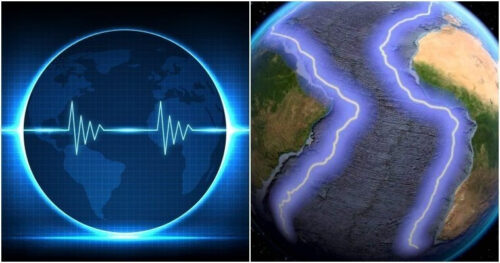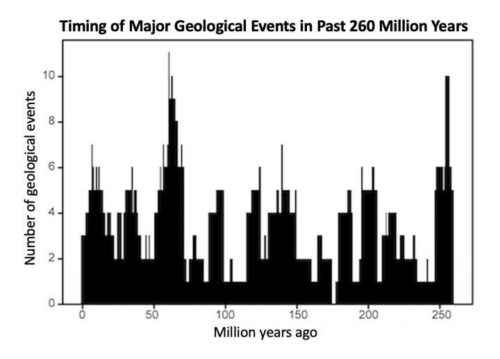
The Mysterious Rhythm of Earth: Exploring the 27.5-Million-Year Geological ‘Heartbeat’
Over the course of 260 million years, Earth has undergone remarkable transformations, witnessing the rise and fall of dinosaurs, the fragmentation of Pangea into the continents we know today, and the rapid and irreversible impact of human activities on our planet.
Yet amidst these tumultuous changes, it appears that Earth has been quietly keeping time.
Recent scientific findings indicate that our planet experiences a slow, steady ‘heartbeat’ of geological activity approximately every 27 million years.
This pulse of clustered geological events, including volcanic eruptions, mass extinctions, plate reorganizations, and fluctuations in sea levels, follows a remarkably consistent 27.5-million-year cycle of catastrophic ebbs and flows.

Fortunately, according to the research team, we have another 20 million years before the next pulse.
In a groundbreaking study, scientists analyzed the ages of 89 well-documented geological events that occurred over the past 260 million years.
The findings revealed a pattern of clustered events, with multiple world-altering phenomena converging within relatively short geological timeframes, giving rise to the catastrophic pulse.
These events encompassed marine and non-marine extinctions, significant oceanic-anoxic episodes, massive flood-basalt eruptions, sea-level fluctuations, global intraplate magmatic pulses, and shifts in seafloor-spreading rates and plate reorganizations.
The results strongly indicate that global geological events are interconnected and tend to occur in pulses following an underlying cycle of approximately 27.5 million years.
The existence of a potential cyclic pattern in geological events has intrigued geologists for decades.
In the 1920s and 30s, scientists hypothesized the presence of a 30-million-year cycle within the geological record.
In the 1980s and 90s, researchers examined the best-dated geological events at that time and proposed pulse intervals ranging from 26.2 to 30.6 million years.

Now, the pieces seem to fall into place, as the 27.5-million-year cycle aligns closely with expectations.
A study published in late 2020 by the same authors even suggested that this particular interval coincides with episodes of mass extinctions.
While this latest study provides valuable insights, tectonic geologist Alan Collins from the University of Adelaide points to a 2018 paper by Muller and Dutkiewicz as another notable contribution to this field.
That research explored Earth’s carbon cycle and plate tectonics and similarly proposed a cycle length of approximately 26 million years.
Collins acknowledges that many of the events examined in the current study have causal relationships, meaning that one event directly triggers another.
For instance, anoxic events can lead to marine extinctions. However, the underlying cause of the 26-30 million-year cyclic pattern remains elusive.

Previous research conducted by Michael Rampino and his team has suggested that comet strikes could be responsible for the cyclic pulses, while some space researchers have even implicated Planet X.
However, if Earth indeed possesses a geological ‘heartbeat,’ the true cause might be closer to home.
The team speculates that these rhythmic pulses of tectonic and climatic changes could result from geophysical processes related to plate tectonics, mantle plumes, or be influenced by astronomical cycles associated with Earth’s motions in the Solar System and the Galaxy.
The study’s findings open up intriguing avenues for further investigation into the fundamental mechanisms governing Earth’s geological cycles.

Understanding the underlying causes of these pulses could provide crucial insights into the dynamics of our planet and its complex relationship with the cosmos.
As scientists continue to unravel the mysteries of Earth’s geological ‘heartbeat,’ we gain a deeper appreciation for the interconnectedness of our world and the awe-inspiring forces that shape it.
